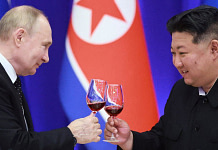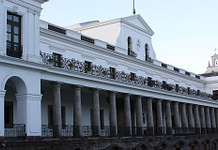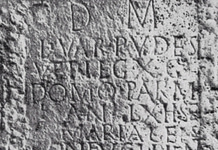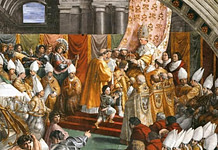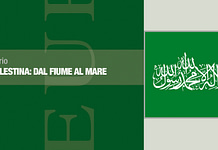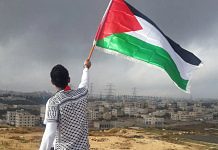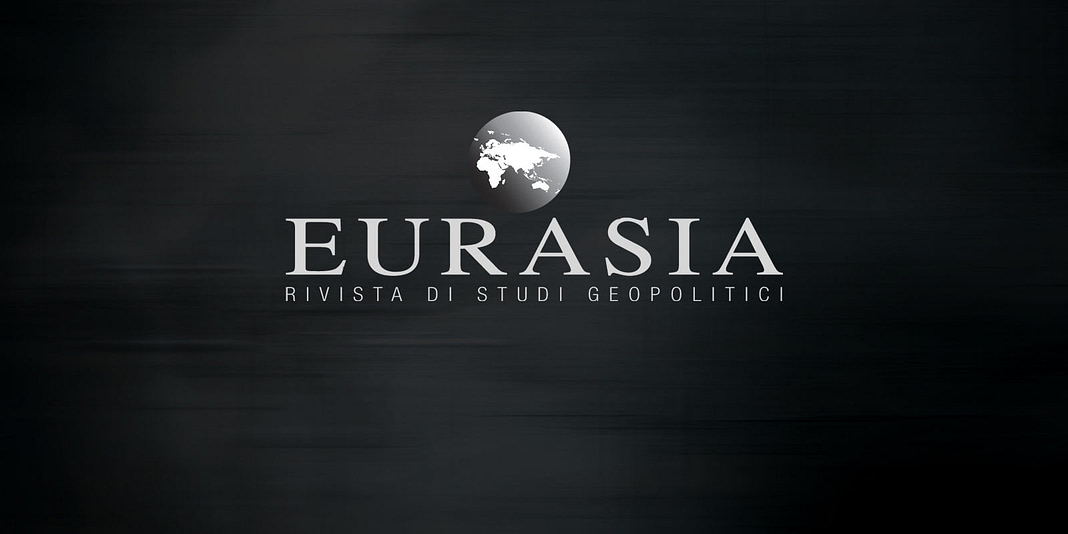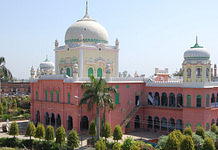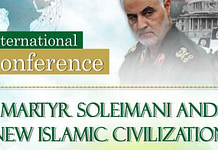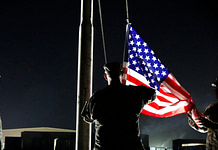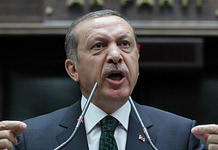In his famous book The Clash of Civilizations Samuel Huntington affirms that the true problem of western world is not the Islamic fundamentalism, but Islam itself. The American ideologist explains that Islamis a strategical enemy of the West, because the confrontation between the two is an existential conflict between secularist values and religious ones, Human Rights and Divine Rights, Democracy and Theocracy. Therefore, until Islam remains Islam and the West remains the West, the conflict will mark their mutual relations.
Huntington’s assertion indicates not only the strategical enemy of the West, but also its tactical ally, that is the Islamic fundamentalism. However in 1996, when The Clash of Civilizations and the Remaking of World Order was published, such a tactical alliance was already existing.
An Arabian ex-ambassador, who had been accredited to the United States and Great Britain, writes: “It is a fact that the USA have stipulated alliances with the Muslim Brothers in order to expel the Soviets from Afghanistan and that since then the USA have courted the Islamist current, supporting its propagation through the Muslim world. Towards the Islamists, most of western States have followed the example of their major ally and have adopted an attitude going from the benevolent neutrality to the resolved connivance” (1).
The western support to the so-called Islamic integralism or fundamentalism did not start in Afghanistan in 1979, where six month before the Soviet intervention the US intelligence had begun to aid the Afghan guerrilla (as the ex director of CIA Robert writes in his book From the Shadows). This support dates back to the fifties and the sixties of the last century, when Great Britain and USA, considering the Nasserian Egypt as the main obstacle to the western hegemony in the Mediterranean region, gave their aid to the Muslim Brothers. A son-in-law of the movement’s founder, Sa’id Ramadan, who created an important Islamic centre in Munich, received money and instructions from the CIA agent Bob Dreher. According the project explained by Sa’id Ramadan to Arthur Schlesinger Jr.: “When the enemy is armed with a totalitarian ideology and served by regiments of devoted believers, those with opposing policies must compete at the popular level of action and the essence of their tactics must be counter-faith and counter-devotion. Only popular forces, genuinely involved and genuinely reacting on their own behalf, can meet the infiltrating threat of Communism” (2).
The exploitation of the Islamist movements useful to the Atlantic strategy did not finish with the Red Army’s retreat from Afghanistan. The aid granted by Clinton’s administration to the Bosnian and Kosovar separatism, the US and English support to wahhabi terror in Caucasian region, Brzezinski’s patronage to fundamentalist movements in Central Asia, the intervention in Libya and Syria are episodes of a war waged against Eurasia, in which the North Americans and their allies have turned to the Islamist collaboration.
Rachid Ghannouchi, who in 1991 received George Bush’s praise for the role he had played in mediating the agreement among the Afghan factions, has tried to justify the Islamist collaborationism, sketching ad idyllic picture of the relations between the USA and the Muslim world. Speaking with a French journalist who asked him if he considered the North Americans more conciliatory than Europeans towards the Muslims, the founder of An-Nahda replied in the affirmative, because “an American colonialism never existed in the Muslim countries; no Crusades, no war, no history”; moreover, Ghannouchi recalled the common struggle of North Americans, Britains and Islamists against the bolshevist enemy (3).
The “noble salafist tradition”
As an Italian orientalist writes, the Islamist current represented by Rachid Ghannouchi “refers to the noble salafist tradition of Muhammad Abduh and has had a more modern version in the Muslim Brothers’ movement” (4).
To return to the pure Islam of the “pious ancestors” (as-salaf as-salihin) and to make a clean sweep of the tradition originated by the Quran and the Prophet’s Sunnah in the course of the centuries: this is the program of the reformist current whose starters were Jamal ad-Din al-Afghani (1838-1897) and Muhammad Abduh (1849-1905).
Al-Afghani, who in 1883 founded the Salafiyya Society, in 1878 had been initiated in a Masonic lodge of Scottish rite in Cairo. He introduced his disciples into the Masonry; among them, Muhammad Abduh became the Mufti of Egypt in 1899 with the consent of British authorities.
“They deserve all the encouragement and support which can be given to them. They are the natural allies of the western reformer” (5). This explicit acknowledgment of the role played by the reformers Muhammad Abduh and Sir Sayyid Ahmad Khan (1817-1889) was given by Lord Cromer (1841-1917), one of the main architects of British imperialism in the Muslim world. Indeed Ahmad Khan stated that “the British domination in India is the most beautiful thing ever seen by the world” and that “it is not islamically lawful to rebel against the English until they respect Islam and the Muslims are allowed to practise the religion”, while Muhammad Abduh transmitted the rationalist and scientist ideas of the West to the Muslim milieu. According to Abduh, in the modern civilization there is nothing contrasting with Islam (he identified the jinns with the microbes and was persuaded that Darwin’s evolutionist theory is contained in the Quran); hence the necessity of revising and correcting the traditional doctrine, submitting it to the judgment of the reason and welcoming the scientific and cultural contributions of the modern thought.
After Abduh, the leader of the Salafist current was Rashid Rida, who after the end of the Ottoman Caliphate planned the birth a “progressive Islamic party” being able to create a new Caliphate. In 1897 Rashid Rida had founded a review, “Al Manar”, which was diffused in the Arabian world and also otherwhere; after Rida’s death, its publisher was another representative of Islamic reformism, Hasan al-Banna (1906-1949), the founder of the Muslim Brothers.
While Rashid Rida theorized the birth of a new, reformed Islamic State, in the Arabian Peninsula was born the Saudi Kingdom, ruled by another reformist ideology: Wahhabism.
The Wahhabi sect
The name of the Wahhabi sect comes from the patronymic of Muhammad ibn Abd al-Wahhab (1703-1792), a follower of the Hanbali school who became enthusiastic over the texts of the literalist jurisprudent Taqi ad-din Ahmad ibn Taymiyya (1263-1328). An interpreter of Quranic symbols from an anthropomorfic viewpoint and a mortal enemy of Sufism, Ibn Taymiyya was frequently accused of heterodoxy and has deserved the definition of “father of Salafist movements” (6). Following his teachings, Ibn Abd al-Wahhab and the Wahhabis condemned as idolatric polytheism (shirk) the faith in the intercession of prophets and saints, so that they considered “polytheist” (mushrik) also the devout believer invoking the Holy Prophet or praying God next to the shrine of a shaykh.
The Wahhabis attacked the holy towns of Shiites, sacking their mosques; after taking possession of Mecca and Madina, they demolished the tombs of Companions and martyrs and even violated the grave of Prophet Muhammad; they banned the initiatic organizations and the Sufi practises, abolished the celebration of the Holy Prophet’s birthday, extorted money from the pilgrims, suspended the Pilgrimage to the Holy House of God, issued the oddest and queerest prohibitions.
After being defeated by the Ottoman army, the Wahhabis separated supporting two rival dynasties (Saud and Rashid) and during a century their civil wars covered with blood the Arabian Peninsula, until Ibn Saud (1882-1953) changed the condition of the sect. Being supported by Great Britain, which in 1915 had instaured official relations with him and had made the Sultanate of Najd a “quasi protectorate” (7), Ibn Saud occupied Mecca in 1924 and Madina in 1925. This way he became “King of Hejaz and Najd and its dependencies”, according to the title decerned to him by Great Britain in Jeddah’s treaty of May 1927.
“His victories – a famous orientalist writes – have made him the most powerful sovereign in Arabia. His dominions reach Irak, Palestine, Syria, Red Sea and Persian Gulf. His prominent personality has imposed itself through the creation of the Ikhwan, i.e. the Brothers: a brotherhood of activist Wahhabis that English Philby has called ‘a new Masonry’ ” (8).
The quoted Philby was Harry St. John Bridger Philby (1885-1960), the organizer of the Arabian anti-Ottoman revolt, who “in Ibn Saud’s court occupied the seat of the deceased Shakespeare” (9), as hyperbolically wrote another orientalist. This new Shakespeare exposed his project to Winston Churchill, George V, Baron Rothschild and Chaim Weizmann: a Saudi kingdom usurping the custody of the Holy Places (traditionally due to the Hashemite dynasty) would be able to unify the Arabian Peninsula and to control the seaway Suez-Aden-Mumbay on behalf of England.
After the Second World War, during which Saudi Arabia had observed a pro-English neutrality, the British patronage was gradually replaced by the North American one. On March 1st 1945, on the board of the Quincy, Roosevelt had an historical meeting with Ibn Saud, who “has ever been a great admirer of America, preferred by him to even to England” (10), as proudly observed by a fellow-countryman of the US President. Indeed since 1933 the Saudi monarchy had granted the oil concession to Standard Oil Company of California and since 1934 the US company Saoudi Arabian Mining Syndicate held the monopoly of the gold digging and mining.
The Muslim Brothers
In order to contain the nasserian panarabism, the baathist national-socialism and – after the Islamic Revolution in Iran – the shiite influence, the neo-royal family of Saud needed an “International” as support for its hegemony in the Muslim world. Therefore the Muslim Brothers put at the disposal of Riyad their militant network, which was strengthened by Saudi funds. “After 1973 the improving incomes deriving from the oil market are assigned to Africa and to the Muslim communities in the West, where a not well established Islam run the risk of opening the door to the Iranian influence” (11). However the synergy between the Wahhabi monarchy and the movement founded by Hasan al-Banna (1906-1949) is based on a common ideological ground, because the Muslim Brothers are “direct heirs, even if not always strictly faithful, of Muhammad Abduh’s salafiyyah” (12) and bear in their DNA the tendency to accept the modern western civilization, with all the due reservations.
Tariq Ramadan, Hasan al-Banna’s grandson and representative of the reformist Muslim intelligentsia, interprets the thought of the movement’s founder: “Like all the reformists who preceeded him, Hasan al-Banna never demonized the West. (…) The West has permitted the mankind to make great strides since the Renaissance, with the beginning of a wide process of secularization (a positive contribution, considering the speciality of Christian religion and clerical institution)” (13). The reformist intellectual remembers that his grandfather, performing the activity of school teacher, drew his inspiration from the most recent pedagogical theories of the West and reports a significant passage written by him: “From the western schools and their programs we must take the constant interest for the modern education, their way of facing the requirements and the preparation to learning (…) We must take advantage of all that, without being shy: science is a right of everyone” (14).
The so-called “Arabian Spring” has proved that the Muslim Brothers, supported by USA in Libya, in Tunisia, in Egypt and in Syria, are willing to accept those western ideological main points which – as Huntington has underlined – clash with Islam. The Egyptian party “Freedom and Justice”, born on the initiative of the Brotherhood and controlled by it, appeals to the Human Rights, champions the democratic doctrine, supports the capitalist economy, does not refuse the loans of the international usurocratic institutions. The Muslim Brother become Egyptian President has studied in USA, where he was assistant lecturer at the California State University; two of his children are American citizens. He has immediately declared that Egypt will observe all the treaties stipulated with other countries (included the Jewish State); he has paid his first official visit to Saudi Arabia and has declared his will of strengthening the Egyptian relations with Riyad; he has proclamed an “ethic duty” the support to the armed opposition struggling against the Syrian government.
If the thesis upheld by Huntington about Islam and Islamism needed a proof, it seems that it has been given by the Muslim Brothers.
1. Rédha Malek, Tradition et révolution. L’enjeu de la modernité en Algérie et dans l’Islam, ANEP, Rouiba (Algeria) 2001, p. 218.
2. http://www.american-buddha.com/lit.johnsonamosqueinmunich.12.htm
3. “- Les Américains vous semblent-ils plus conciliants que les Européens? – A l’égard de l’islam, oui. Il n’y a pas de passé colonial entre les pays musulmans et l’Amérique, pas de croisades; pas de guerre, pas d’histoire… – Et vous aviez un ennemi commun: le communisme athée, qui a poussé les Américains à vous soutenir… – Sans doute, mais la Grande-Bretagne de Margaret Thatcher était aussi anticommuniste…” (Tunisie: un leader islamiste veut rentrer, 22/01/2011; http://plus.lefigaro.fr/article/tunisie-un-leader-islamiste-veut-rentrer-20110122-380767/commentaires).
4. Massimo Campanini, Il pensiero islamico contemporaneo, Il Mulino, Bologna 2005, p. 137.
5. Quoted by Maryam Jameelah, Islam and Modernism, Mohammad Yusuf Khan, Srinagar-Lahore 1975, p. 153.
6. Henry Corbin, Storia della filosofia islamica, Adelphi, Milano 1989, p. 126.
7. Carlo Alfonso Nallino, Raccolta di scritti editi e inediti, Vol. I L’Arabia Sa’udiana, Istituto per l’Oriente, Roma 1939, p. 151.
8. Henri Lammens, L’Islàm. Credenze e istituzioni, Laterza, Bari 1948, p. 158.
9. Giulio Germanus, Sulle orme di Maometto, vol. I, Garzanti, Milano 1946, p. 142.
10. John Van Ess, Incontro con gli Arabi, Garzanti, Milano 1948, p. 108.
11. Alain Chouet, L’association des Frères Musulmans, http://alain.chouet.free.fr/documents/fmuz2.htm.
12. Massimo Campanini, I Fratelli Musulmani nella seconda guerra mondiale: politica e ideologia, “Nuova rivista storica”, a. LXXVIII, fasc. 3, sett.-dic. 1994, p. 625.
13. Tariq Ramadan, Il riformismo islamico. Un secolo di rinnovamento musulmano, Città Aperta, Troina 2004, pp. 350-351.
14. Hassan al-Banna, Hal nusir fi madrasatina wara’ al-gharb, “Al-fath”, Sept. 19th 1929, quoted by Tariq Ramadan, Il riformismo islamico, p. 352.
Questo articolo è coperto da ©Copyright, per cui ne è vietata la riproduzione parziale o integrale. Per maggiori informazioni sull'informativa in relazione al diritto d'autore del sito visita Questa pagina.


